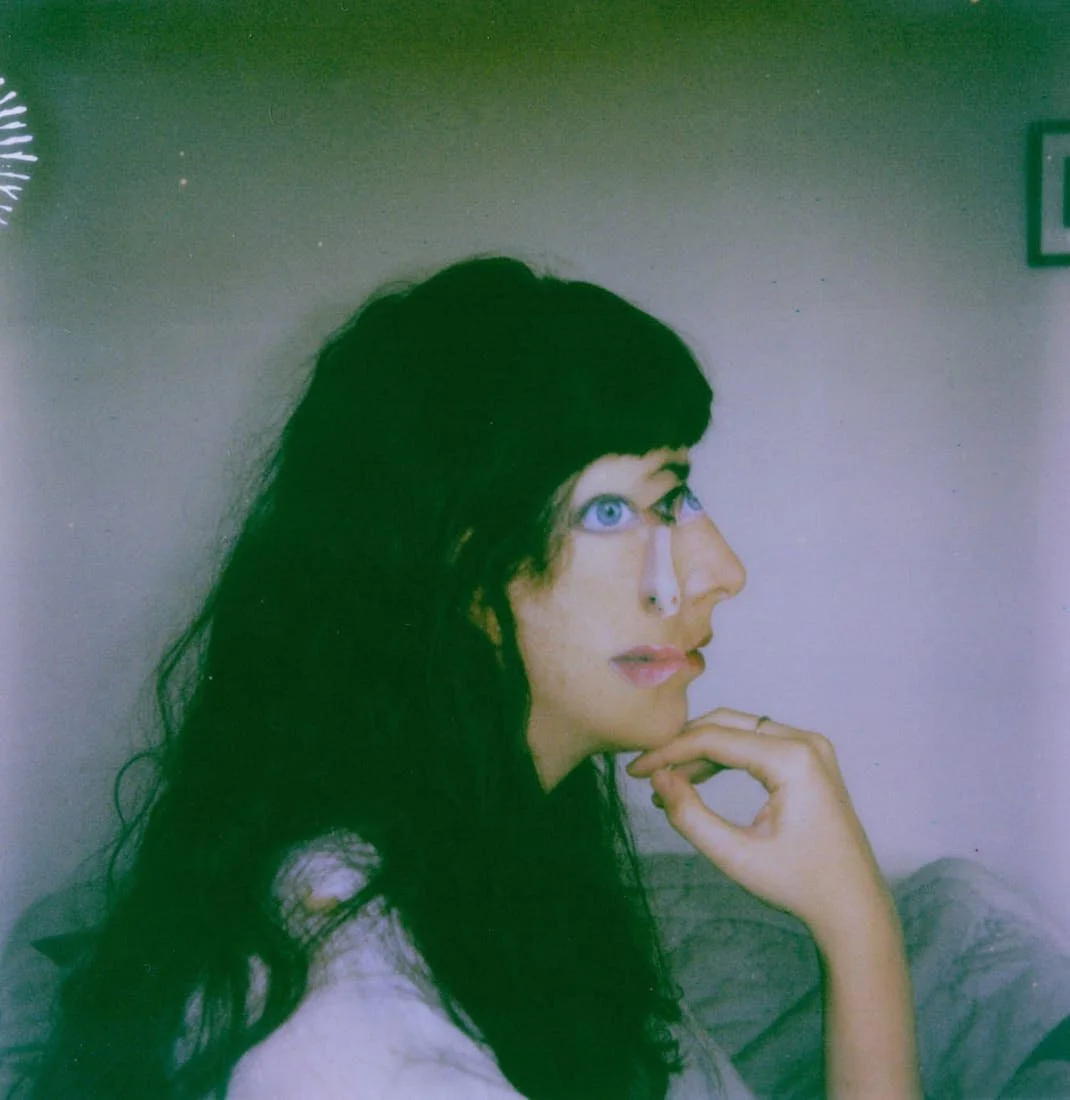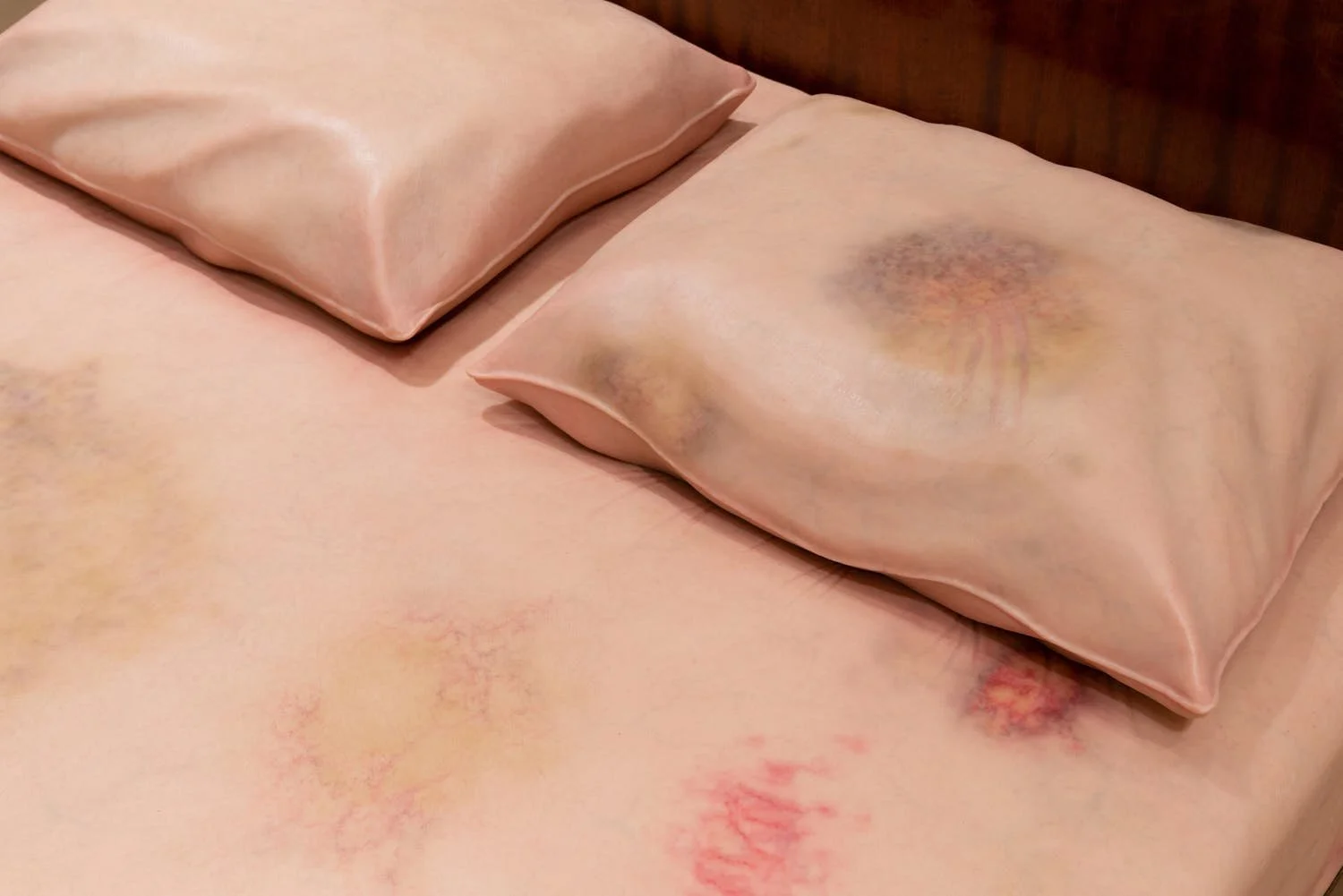MAAYAN SOPHIA WEISSTUB
*She Cuts the Body, Stitches the House, Feeds the Silence
written + interview JONATHAN BERGSTRÖM
As a multidisciplinary artist, Maayan Sophia Weisstub’s work examines the relationship between identity, space, and the broader human experience.
Based in the United Kingdom and a graduate of the Royal College of Art, Maayan works in sculpture, collage, and kinetic art, often centering on themes such as domesticity, gender, sexuality, and mortality. Her works have been exhibited internationally and have earned her recognition as a finalist for prestigious awards like the Robert Walters Group UK New Artist of the Year Award.
In this interview we speak with Maayan about her current projects, her approach to materials, and how she brings together the body, home, and identity in her artistic practice.
Maayan Sophia Weisstub
Courtesy of the Artist
The Bed, 2022
wood, foam, silicone
95 x 123 x 198 cm
Courtesy of the Artist
The Bed, 2022
wood, foam, silicone
95 x 123 x 198 cm
Courtesy of the Artist
Jonathan Bergström
Themes of domesticity, gender, mortality, and sexuality seem to be central to a lot of your work. What initially drew you to these subjects?
Maayan Sophia Weisstub
Sexuality, domesticity, gender, and death occupy my thoughts and are an inseparable part of my life, as they are an inseparable part of the universal human experience. The home represents a safe and protective environment- from the primal womb, through the family home and its transformations, to the final home where we will reside. It is a familiar and safe space on one hand, and on the other hand, it holds secrets and traumas.
As you’ve mentioned yourself, the domestic space has historically been seen as a place that restricts women. How does your work respond to or reframe that idea?
For example, in my sculpture The Bed, I give space to the traumas and violence that occur within our domestic environment. The bed, usually covered in our sheets, appears as battered skin, covered with bruises, scratches, and scars. In another work, Dine with Me, I present a dyadic configuration which embraces the concept of oneness between man and woman, symbiotic-patriarchal relationships, and the problematic nature of such dynamics.
What’s your process for creating one of your collages?
The process of creating a collage is relatively simple, at least once I have an idea. Once I have an idea, I either photograph or search for images as similar as possible to the visual concept I envisioned in my mind. Then, I combine the images and edit them into a collage on Photoshop.
What role do materials play in your practice, and how do you select those that enhance the emotional or conceptual impact of your work?
Usually, when I have an idea for a new piece, the concept appears intertwined with the material in its final form, and I can "see it" in my mind. This is why I work with and create in a variety of different media.
At the same time, there are the limitations of reality, and for some works that I would like to see in a particular material, I choose a more creative and practical solution.
How do you approach the creation of kinetic works, like your lightbulb sculptures?
Kinetic sculptures are technically complex, so when I have an idea for a kinetic sculpture, I develop the concept, create sketches and simulations, and when it comes to the technical execution phase, I work closely with technicians and professionals, guiding the process every step of the way.
“The home represents a safe and protective environment—on one hand. On the other, it holds secrets and traumas.”
Maayan Sophia Weisstub speaks with Jonathan Bergström
for LE MILE Issue 38 / Ephemeral Edition SS25
Familiar Fracture
The Vase
Courtesy of the Artist
Familiar Fracture
The Vase
Courtesy of the Artist
What do you want viewers to take away from the way you deconstruct and reassemble body parts and everyday objects?
I don’t want anything specific to be taken from my work; my creations are not didactic. I do, however, hope that my works evoke emotions, imagination, and creativity, connecting viewers with new ideas in the hope that they will resonate within them.
Your piece The Weeping Tap started as a video on Instagram. How does social media impact the way you create your art?
The Weeping Tap started as a video and was later uploaded to Instagram—it wasn’t originally conceived with Instagram in mind. Social media doesn’t have a conscious influence on my creative process; however, there is an acknowledgment of the dialogue that forms after the work is created. I feel its influence more in how I share my work—the immediacy and openness with which I expose my sketches or thoughts.
Duality is also a recurring theme in your work. How do you balance contrasting ideas, such as vulnerability and audacity?
Duality is an inherent part of reality, such as light and shadow. Whether the duality is overt or hidden, it will always exist, and it is what allows for depth. I don't aim to balance it but rather to give it space, to make the differences present, and through that, to reveal complexity and multiple layers.
How do you decide when to leave something open to interpretation versus when to make it more literal or explicit?
Even when the message is simple and literal, there is always room for interpretation, and anyone who experiences a work of art brings their personal perspective, which, in my eyes, enriches and enlivens it. Some works have a more straightforward and immediate concept, such as the video collage works on sexuality, which are playful and clear to the viewer. Other works, like 'The Breathing Table,' have a quieter concept and message, dealing with loss and memory, and require more patience as they are not immediate.
In addition to your visual work, do you have any interest in exploring other mediums, such as performance or sound art?
I am always curious about other and new mediums, and sound is very interesting to me. I really love sound, but unfortunately, I don't have much experience in the field. However, I would love to experiment and collaborate with more experienced creators. I also love and appreciate performance, but I don't see myself creating in this medium, at least not in the foreseeable future.
Are there any new directions or creative concepts you're planning to explore in your next body of work?
These days, I am very interested in the concept of the 'other' in society. As I delve deeper into understanding the meaning of the 'other' and its place in society, both culturally and socially, it naturally expands my awareness of the hidden parts within the depth of my unconscious.
Video Credit
The Weeping Tap
Courtesy of the Artist





